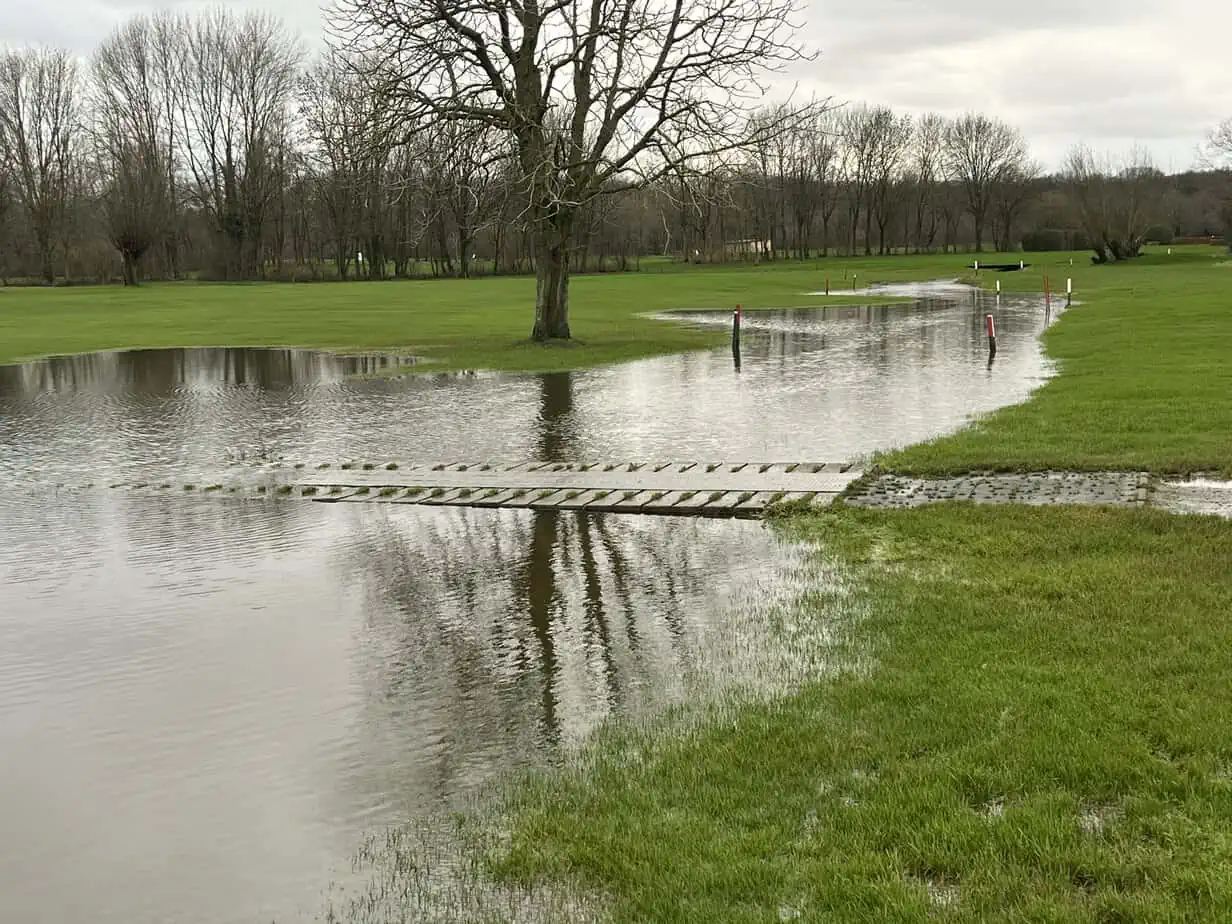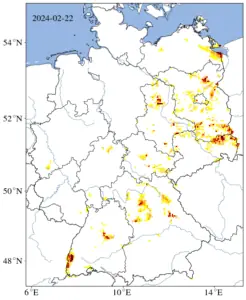Wet conditions paralyze Germany’s courses
It’s wet, very wet on Germany’s golf courses. Many a golf course operator can recite the names of the lows that have been circling the country since last October. Sometimes they were called Abdul, sometimes Loki, Yue and Xhemile have just left Germany behind. The effects can be summarized simply: Deeply wet, closed or partially closed courses in many regions, plus plenty of greenkeepers looking ahead to spring with concern.
On site in the region Schleswig-Holstein, where golf is otherwise played all year round on numerous courses, the statements from the clubs in mid-February were clear. “Closed, too wet” was the message at the Lübeck-Travemünde Golf Club. The same can be heard from GC Ahrensburg, GC Kitzeberg and many more. “Our rainfall in 2023 has doubled compared to 2022 to around 1200 ml,” says Golf & Nature Officer Nico Nissen, summing up the past year and talking about the Glücksburg Fjord Golf Club, where players occasionally venture onto the wet fairways.
For Wojciech Listopadzki, Headgreenkeeper at GC KitzebergThe consequences are obvious: “It’s almost impossible to drive onto the pitches with the machines because there is damage immediately,” he notes, looking at the small pond landscapes that have formed, especially in the lower part of the course, and kicks the ground with his thick shoes. The water immediately comes out at the edges. “Unfortunately, this also means that it is hardly possible to start the first spring work on the greens.” What remains is pruning work on the edges of paths and roads, which can be carried out without damaging the space, and other work in outdoor areas.
Communication with the golfer is important
But it is also clear: “When the weather is good and the temperatures are mild, golfers naturally flock to the courses,” says Kolja Hause, office manager of the Schleswig-Holstein Golf Association. Some golfers may then lack understanding for the fact that no or hardly any course work has apparently taken place in recent weeks. The communication of golf courses to golfers via newsletters or social media is then important. A clearly visible notice in the secretary’s office could also help.
At GC Münster-Brückhausen, this type of crisis communication has long been professionalized in recent months. “We’ve actually been closed more or less continuously since October,” says Jürgen Stiegler, responsible board member for the golf course, in mid-February. “We were flooded five times in total, and our head greenkeeper has long been an expert on flooding.” Now the club in Münsterland is actually located in a designated flood zone “and at least it prevents the village behind us from being flooded.” However, we have never experienced such an extreme phase. “We play a central role in local water management,” says Stiegler, acknowledging the important role of the golf course as an alternative area for the River Angel and the Kleine Angel during extreme rainfall, as has been the case since the fall. This is another reason why the greens or training huts are already built higher anyway.
Follow-up costs for the club
Club members have hardly been able to use the course since October, and the club is also facing the costs of sand and aerification measures. The club managers have long been aware that the pitch quality will not be ideal this summer either. Nevertheless, he concludes, the support from the membership is enormous. “People also realize that almost all the other clubs in the area are also closed,” says Stiegler.
Those golf courses whose fairways run on largely sandy ground are lucky. Yes, one or two more green fee players have definitely dropped by the Gut Grambek Golf Club, says Vice President Ingo Bernien. The parkland course just before the border with Mecklenburg-Vorpommern seems comparatively dry. At GC Büsum Dithmarschen, it was even possible to sell one or two winter memberships. No, nobody really wants to do business with the weather misfortune of other golf courses, but on the other hand, the laws of the free market economy also govern the golf scene.
At the same time, the heavy rainfall of the past few months also has its positive side: the overview maps of the Helmholtz Center for Environmental Research’s Drought Monitor look significantly different this year than at the same time 12 and 24 months ago. Moisture penetrates the entire ground almost everywhere. The red and yellow zones, which indicate drought, have been reduced to tiny patches.
Whether it will stay that way is uncertain. The last few months have shown one thing once again. The weather is increasingly difficult to calculate. The only certainty is that golfers and golf courses will have to adjust to this it.









